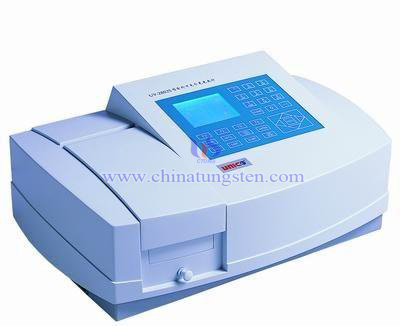Online Testing Molybdenum Ion Concentration in Sodium Tungstate Solution
- Details
- Category: Tungsten Information
- Published on Monday, 18 January 2016 18:31
There’re many disadvantages of traditional manual testing the concentration of molybdenum ion in sodium tungstate solution. For example, it has poor reproducibility and it’s easy to produce precipitation. The operation is tedious and cost is high. This paper introduces using flow injection technology to combine with spectrophotometric method. Setting up an online inspection system of molybdenum ion and a series of optimization to the experimental conditions and experiment method greatly improves the stability and sensitivity. The continuous on-line analysis is realized. It can be applied in the online testing of molybdenum ion in sodium tungstate.
Experiment principle: when the sample and reagent produce chromogenic reaction, non-ferrous material is generated. Nonferrous material is current-carrying pushed through flow pool. Non-ferrous material absorbs the photons. Through the photoelectric cell, make the photon energy to convert into electrical signals. Load into the computer, according to the size of absorbance, concentration is detected. In the detection of molybdenum ion process, the influence of tungsten ion in sodium tungstate on testing molybdenum ion must be considered.

Through the experiment we can draw the following conclusions:
1. The allocation of chromogenic reagents. Try to mix different concentrations of thiourea, potassium thiocyanate and copper sulfate solution according to different proportions and observe its stability. Results show that better preparation method is using the ratio of 1:1:1.2 to add chromogenic reagents.
2. The choice of concentrations of potassium thiocyanate. When the concentration of potassium thiocyanate solution is 250 g/L, the sensitivity is higher and the precipitation isn’t easy to appear. The result is satisfactory.
3. The choice of catalyst solubility. Copper ion has the catalytic reduction effect. It can accelerate the molybdenum reduction. It was found that when the copper sulfate solution concentration is 30 g/L-1, the result is best.
4. The choice of the reaction acidity. The results show that when the concentration of the acidity is 1:3, the effect is better.
5. The choice of concentration of reductant thiourea. When the concentration of reducing agent is 100 g/L, the effect is better.
To sum up, using the chromogenic reagents of experimental configuration and combining flow injection technique with spectrophotometric method can online test molybdenum ion concentration well. Configuring different reagents on this method can test different ion concentration conveniently and fast.
| Sodium Tungstate Supplier: Chinatungsten sodium-tungstate.com | Tel.: 86 592 5129696; Fax: 86 592 5129797;Email:sales@chinatungsten.com |
| Tungsten News & Prices, 3G Version: http://3g.chinatungsten.com | Molybdenum News & Molybdenum Price: http://news.molybdenum.com.cn |



 sales@chinatungsten.com
sales@chinatungsten.com